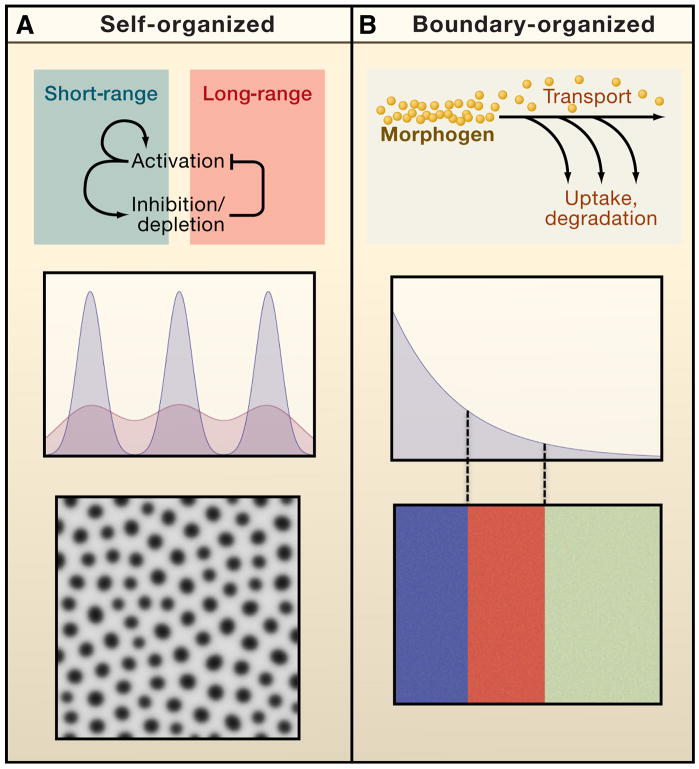Figure 2.
Two modes of organization in the control of pattern. The performance objectives of patterning systems include both controlling the locations of events relative to each other, and controlling them relative to pre-specified landmarks. Turing patterns are one example of self-organizing pattern (A). Repeated patterns form spontaneously, and exhibit spacings that depend primarily upon the details of local signal activation, inhibition and spread, with relatively little influence from events outside the system. In contrast, long-range morphogen gradients typify boundary-driven organization (B). They inform cells of their location relative to fixed landmarks. In both cases, morphogens establish a characteristic “length scale” or “wavelength”. In the first case (A), pattern is a direct reflection of that scale, such that elements (rows of spots) occur once per length scale. In the second case (B), the length scale simply determines how gradually “positional information” decays over space; where pattern elements occur (blue, red, green blocks) depends upon how cells interpret the positional information they receive.

